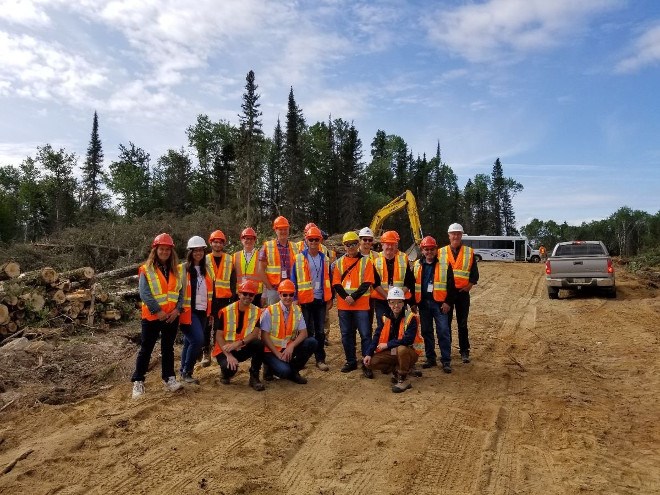A group of southern Ontario architects, engineers, and union leaders took part in a forestry and mill operations in Timmins.
As part of the It Takes a Forest awareness initiative, the mill and bush tour is co-sponsored by Forests Ontario, EACOM Timber Corporation and Rayonier Advanced Materials.
The tour was born out of the need to increase awareness around the forest sector, as well as to address the knowledge gap between southern Ontario wood users and Northern Ontario wood manufacturers and forest managers.
“Ontario’s forests provide locally-sourced and environmentally low-impact options for the construction sector,” said David Moses of Moses Structural Engineers in an Aug.15 press release.
“The mill and bush tour brought key industry decision-makers to northern Ontario to experience sustainable forest practices and wood production firsthand. We expect this trip will foster new relationships to strengthen the economic ties between Ontario’s north and south.”
Professionals from Moses Structural Engineers, EllisDon, Simpson Strong-Tie, Moriyama & Teshima Architects, Carpenters Local 27, studioCANOO Architecture Inc., and Moote Architect took part in the tour. They began the day observing active logging operations and regenerated sites.
Want to read more stories about business in the North? Subscribe to our newsletter.
Southern and eastern Ontario collectively represent one of North America’s largest construction markets.
The tour is relevant with the establishment of Ontario’s first cross-laminated timber plant in St. Thomas.
“We are seeing individuals in the fields of architecture and engineering increasingly recognizing that building sustainably means building with wood,” said Rob Keen, CEO of Forests Ontario. “As this recognition continues to grow, so does the desire to learn where our most sustainable and only renewable building material – wood – comes from.”
Participants also had the opportunity to tour the EACOM Timmins mill – the region’s oldest and longest running sawmill, which recently celebrated its 100th anniversary. Over the past century, the Timmins mill has seen significant advancements in technology – from horse drawn wagons to 3D imagery – to elevate the transformation of wood into the 21st century and optimize every log.
“The trees we harvest today for the Timmins mill are younger than the mill itself,” explained Jennifer Tallman, EACOM’s chief forester.
“It’s a story of sustainability that we hope inspires the next generation of architects, engineers and leaders to drive innovative and responsible construction for Canada’s urban communities.”
“Our long-term commitment to managing out forests provides a sustainable foundation for the wood construction sector, provides vital wildlife habitat, and reduces greenhouse gas in our atmosphere,” said Alan Thorne, Rayonier’s chief forester for Ontario.




